Last weekend, I was among the very lucky people who attended Michael Windover’s symposium, Art Deco in Context: Cosmopolitanism, Class, and Culture between the Wars. It was a truly wonderful event, with a blend of excellent papers from international scholars, hands-on workshops with fascinating artifacts from the 1920s and ‘30s, and several unforgettable site-visits.
Here are just a few of the highlights:
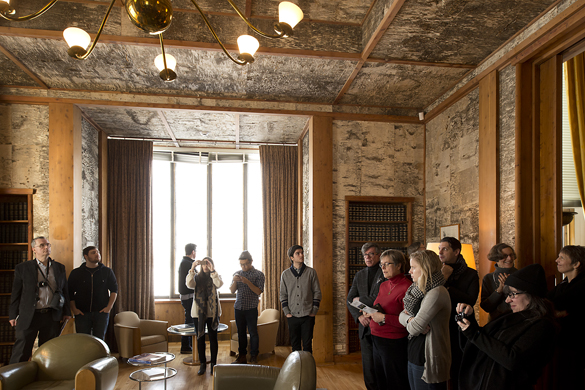
The French Embassy in Ottawa is one of the most celebrated Art Deco buildings on this continent. Access is, naturally, very limited – I’ve only been inside twice, and both times were arranged by Michael Windover! We’re shown here inside the incredible Smoking Room, with walls clad in birch bark. Yes, you read that correctly.
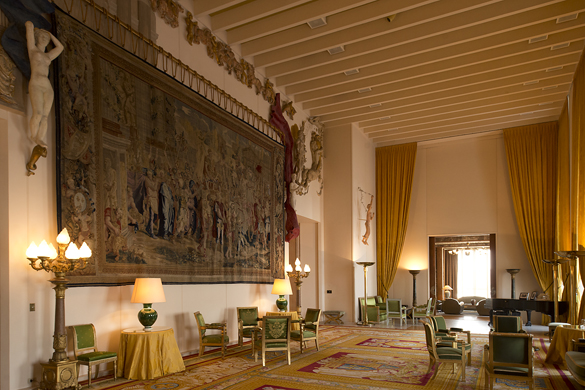
The Embassy’s Grand Salon was designed specifically to display the eighteenth-century tapestry on the left, which depicts the Triumph of Constantine.
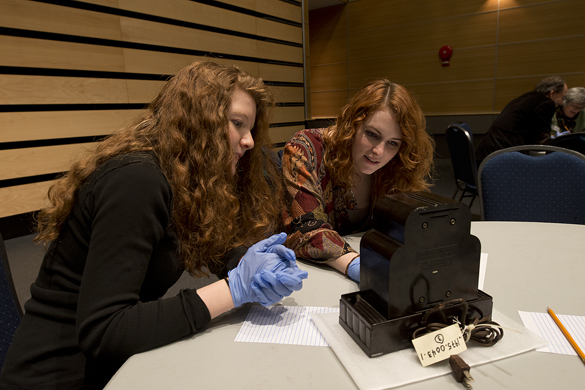
It’s a bird! It’s a plane! It’s an Art Deco radio! Hmmm… maybe not…
On Saturday afternoon, we divided into several groups, each of which was presented with an Art Deco object to inspect. The idea was that we would use the methods of material culture to decipher what the object’s function was.
In fact, this is a cauterizer for snipped haemorrhoids. Gabby and Ashley reacted far more bravely to the news than I would have.
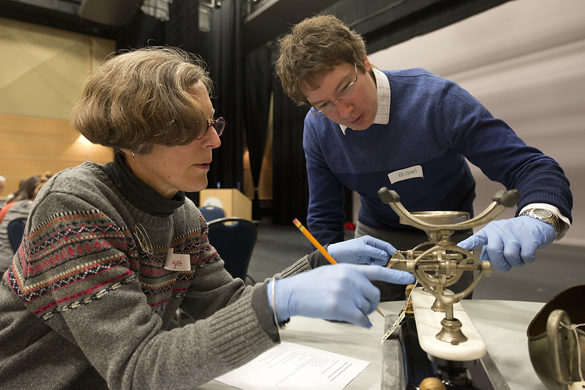
Doctors Elliott and Windover perform an operation on a stunning Art Deco scale.
All of these remarkable objects were provided by the Canada Science and Technology Museum – they may be temporarily ‘closed’, but they are anything but gone!
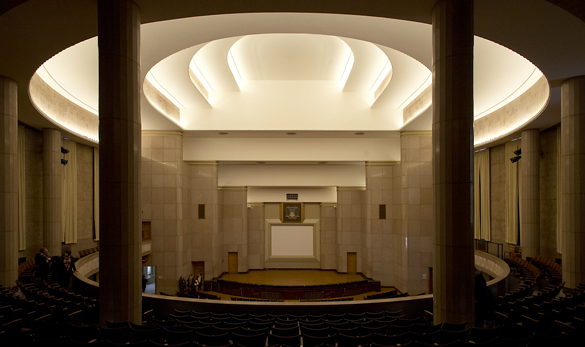
On Sunday, we all piled into a coach to Montréal, for a fabulous feast of Deco. Stop one was the Université de Montréal.
Ernest Cormier, best known to Ottawans as the architect of the Supreme Court of Canada building, is in fact much better-known elsewhere as the architect of the U de M. In a country whose academic landscape was dominated by Collegiate Gothic inspired by English models, U de M was a dazzling statement of autonomy and modernity. This is the auditorium. How I would love to lecture there…
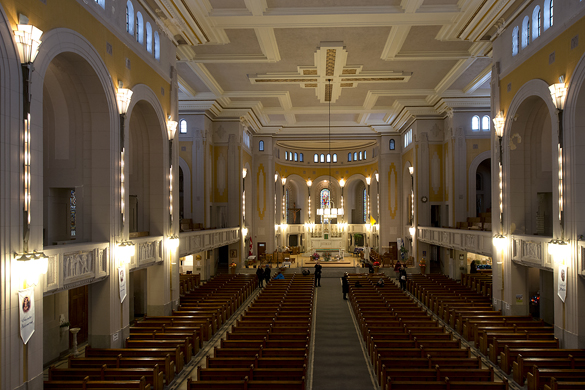
Wow. Wow. Wow. Who would have thought that a conservative patron like the Church and the emphatic modernity of Deco could form such a formidable partnership? The church of St-Esprit was designed by Joseph-Aegis-Césaire Daoust, and built between 1931 and ‘33.
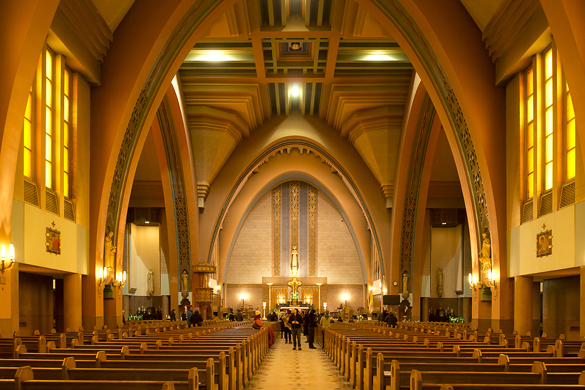
The ‘Dom Bellot’ style is a particularly visceral subset of Deco, known for its robust parabolic arches, rich coloration and brawny geometry. This is St-Jean-Berchmans, built 1837-39. The heaviness and angularity ought to be oppressive, but aren’t. It brought to mind Ian Nairn’s description of Westminster Abbey: “it is the unexpected case of an impersonal building with a lot of personality.”
Art Deco in Context was a great three days. Congratulations and thanks to Michael and his many collaborators for an outstanding event – and congratulations to those of our students who were able to take advantage of it!